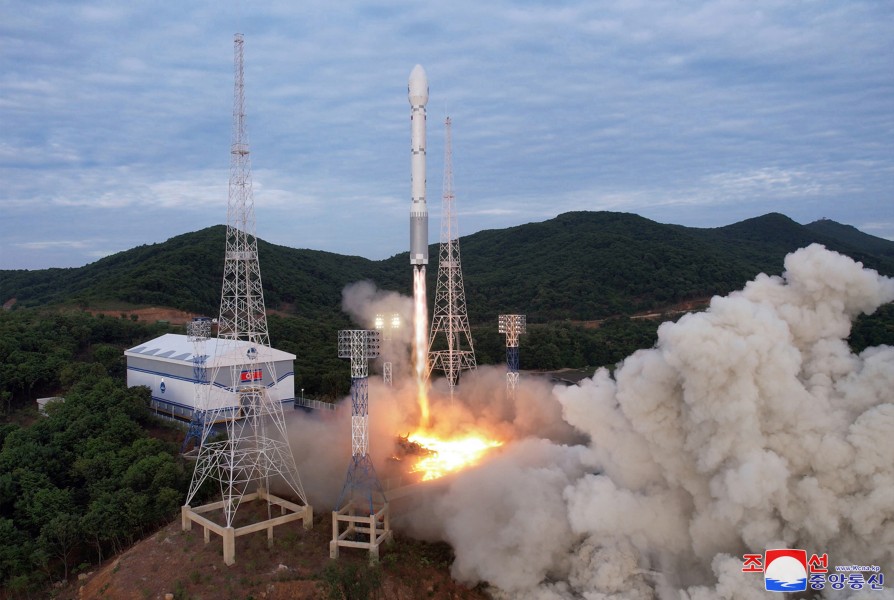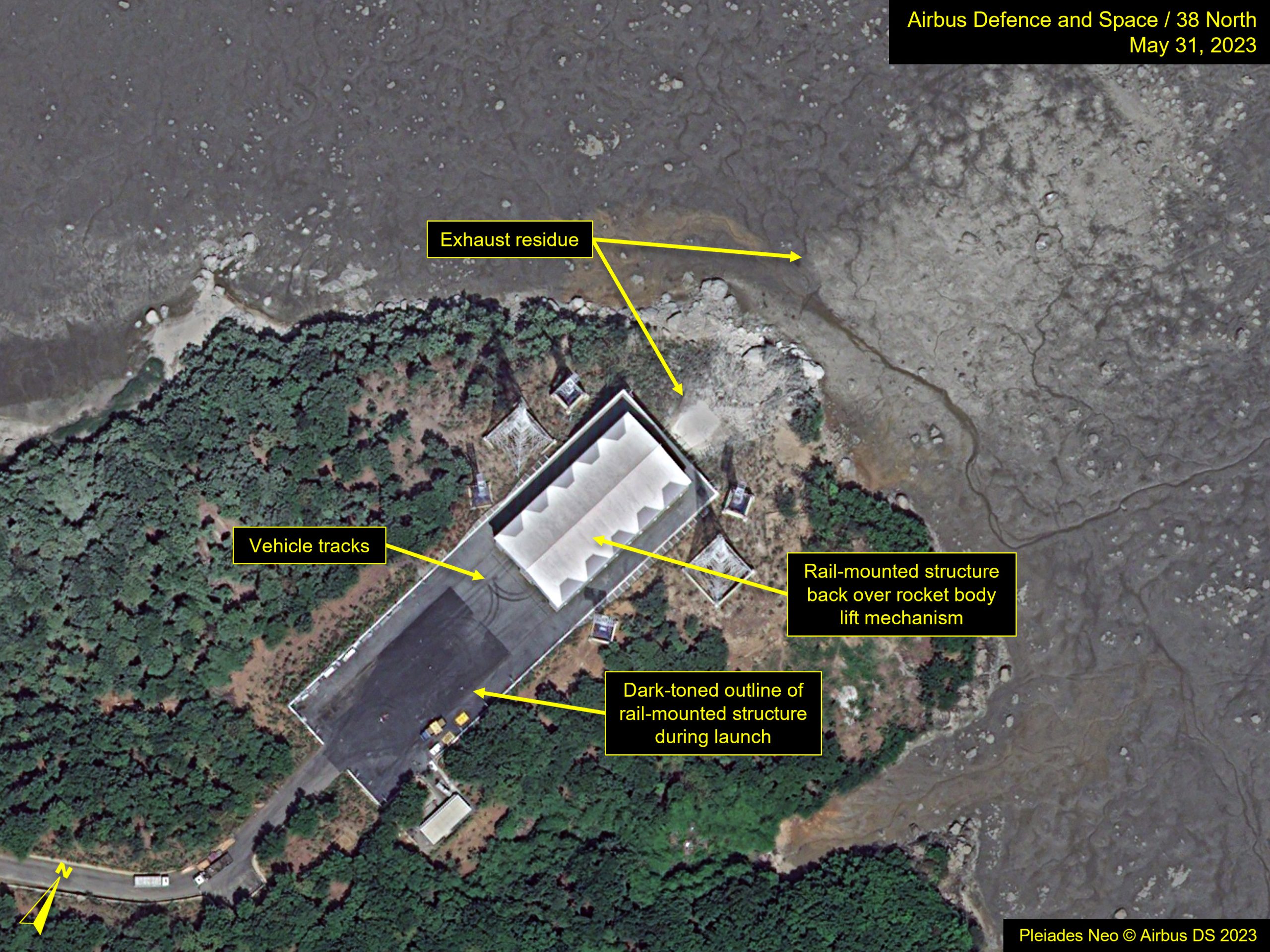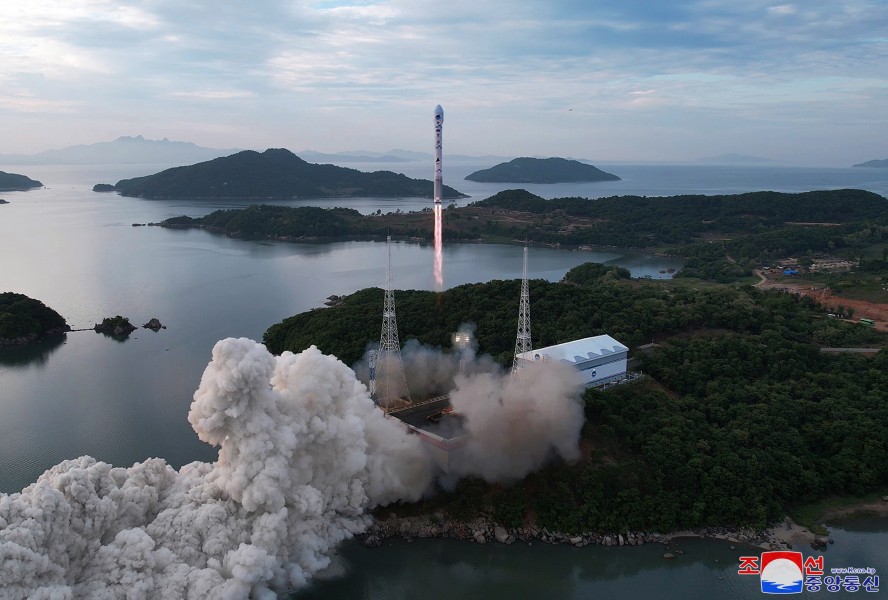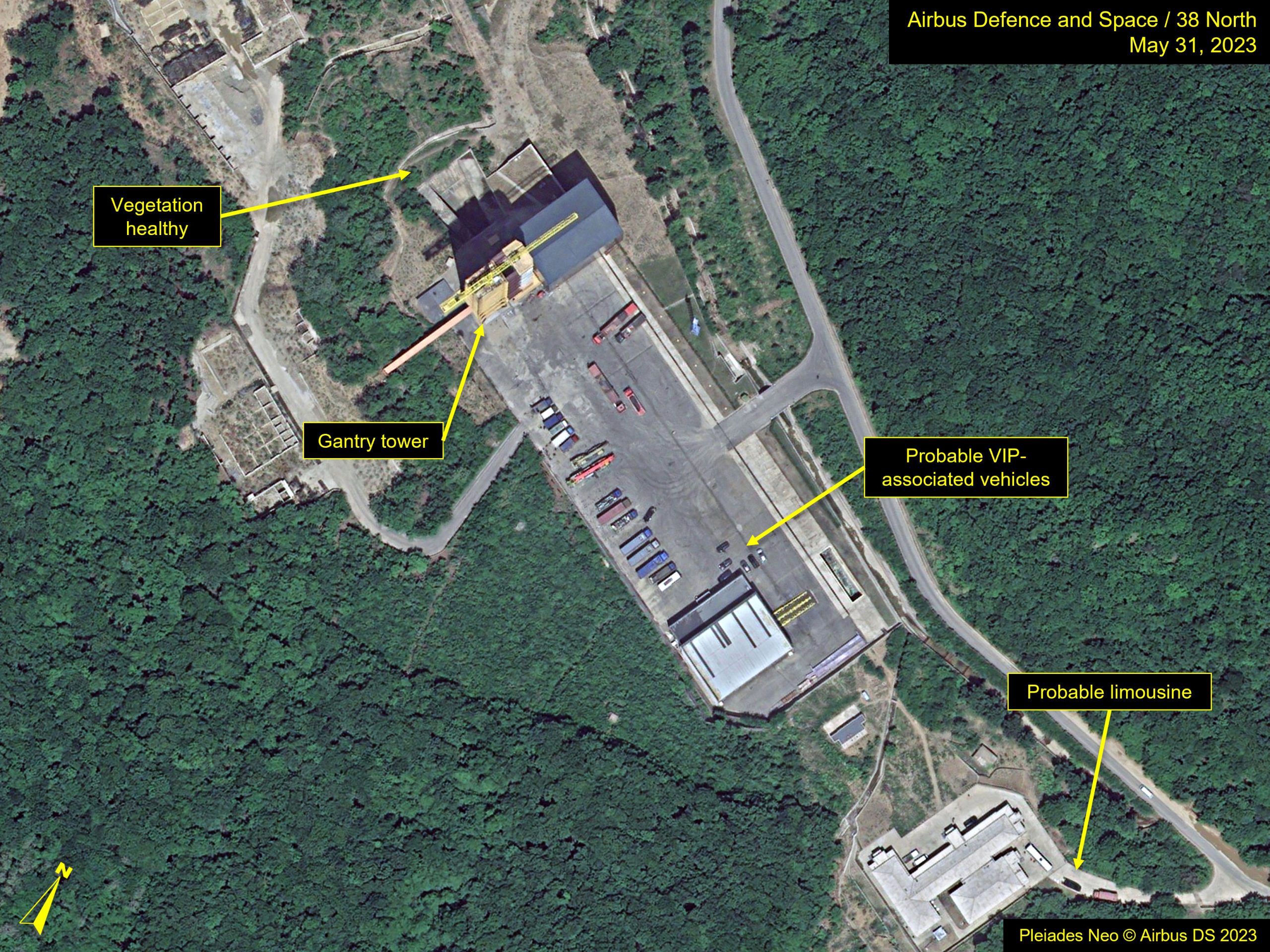Sohae Satellite Launching Station: Post-launch Clarity
North Korea’s failed attempt on Wednesday to launch its first military reconnaissance satellite took place on a new rocket from the new coastal launch pad at Sohae Satellite Launching Station that was built in a few weeks, according to images published on Thursday by the Korean Central News Agency (KCNA). What remains unclear is the reason for the concentration of activity seen in the last few days at the main launch pad.
New Coastal Launch Pad
The images published by KCNA show the Chollima-1 rocket lifting off from the launch pad and a large plume of light grey smoke outside the flame bucket and out to the mudflats. An environmental enclosure that had been present over the launch position was pulled to the rear of the launch pad.
Visible below the rising rocket is the strongback lifting mechanism that was used to lift the rocket into position.

Commercial satellite imagery captured the scene on the launch pad approximately five hours after the launch. The rocket was launched at 6:27 a.m. local time (2127 UTC, May 30), and the image is from 11:35 a.m. local time (0235 UTC, May 31).
Although the Chollima-1 exhaust plume appeared transparent, indicative of being liquid fueled, it did deposit light grey residue around the launch pad and through the exit to the flame bucket, and across nearby mudflats. The reason for this residue is unclear. The area that had been covered by the environmental enclosure is a deeper shade of black and tire tracks, apparently made after the launch, were also visible.
The launch pad was devoid of most of the equipment and vehicles seen the day earlier. Two trucks and personnel were present near or on the pad, and the mobile assembly structure was positioned over the launch stand.

The image clearly shows the lightning arrestor towers and floodlights that had been previously identified in satellite imagery earlier in the month. Also visible are the National Aerospace Development Administration (NADA) logo and the North Korean flag on the side of the environmental enclosure.

Main Launch Pad
In the days leading up to Wednesday’s launch, the main launch pad had been a hive of activity. Numerous vehicles were seen on the pad, cranes were in position, and the rail-mounted transfer structure had been positioned alongside the launch tower. All of these were signs in the past of an impending launch.
As such, the activity visible on the main satellite launch pad could indicate another launch forthcoming. North Korea’s navigation warning to ships remains in place until early morning on June 11, although for it to be valid, the same type of launch would need to be attempted; otherwise, the three debris drop zones would be different.
If a slightly different launch is planned, North Korea could issue a new warning to mariners. In its initial post-mortem of the failed launch, KCNA said the rocket failed due to an issue with the second-stage engine and that further tests would be conducted. They could include engine-testing using facilities at Sohae.

